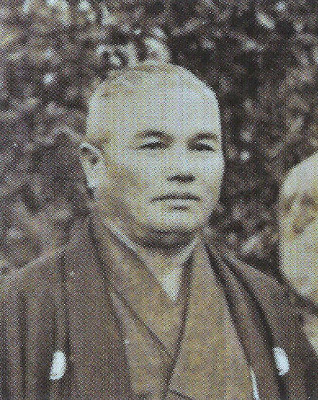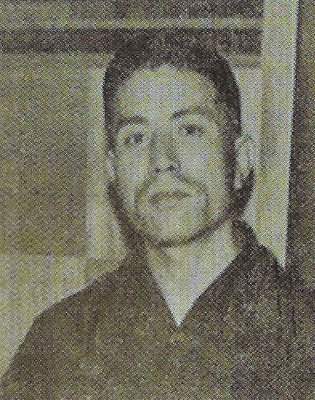| 1 |
1919 -- Josephine Finneyfrock was born. [She would graduate
from the University of Maryland School of Nursing, receive her
certification as a Medical Assistant and work for 37 years for a doctor
in the Washington, D.C. area. When the physician died, she
would continue working for his doctor-son. In 1970, she,
Molly Hersh and Jim Newton would found the Potomac Bonsai
Association. She would serve the P.B.A. over the years in almost
every office, and with Molly she would be the behind-the-scenes "glue"
for both Washington BCI conventions, 1976 and 1986. Jo would
serve as Corresponding Secretary on the BCI Board from 1978 to
1981. She would die in 1989.]
("Bonsai World Suffers a Great Loss" by Jean C. Smith,
Bonsai Magazine, BCI, Vol. XXVIII, No. 3, May/June 1989, pg.33)
1923 -- Two minutes before noon, as all of the lunchtime cooking fires were going, the Great Kanto Earthquake (8.3 magnitude) struck the 2.5 million person capital city of Japan. Officially, 142,807 people died or were missing in the five-minute-long quake, subsequent fire storm, and thirty-six foot high tidal wave into the main city and suburbs. Over 250 bridges were ignited by falling cinders. Three-quarters of Tokyo was destroyed; neighboring Yokohama was practically wiped out of existence. Ninety of the 237 total aftershocks occurred within the first twenty-four hours. In the two cities combined, nearly six hundred thousand dwellings were destroyed for an estimated loss of $2.8 billion dollars. Many landscape gardens were also damaged or destroyed, and at least two temples in the old capital of Kamakura (only a dozen miles away from Yokohama) were collapsed by the quake. Why this is important to us: [Near downtown Tokyo was the Kanda area, where bonsai were grown in the backyards. It was one of the areas gutted by the earthquake's firestorm. Following the disaster, the two-year-old Bonsai Promotion Group would be disbanded (but its magazine, Bonsai, would continue). In April 1925, a group of thirty families of professional growers from downtown Tokyo and now under the leadership of Ritaro Shimizu would go looking for a location with cleaner air and water. Having made a contract with Zensaku Kojima (a landlord and a member of the Diet) to borrow a lot, the group would purchase some land in a forest of stately Japanese red pines, cryptomeria, and cherry-trees which was overrun with grass. This was near Hikawa Shrine on the way to Nikko. There, about twenty miles (32 km) north-northwest of Tokyo and at an elevation of about 60' (18 m) above sea level, they would clear an area of approximately thirty-one hectares (about 76 acres) in the northern part of Omiya Park, settle, and form a Bonsai Mura or Dwarf Tree Village. A carpenter, Kin-ichiro Kusakabe, would settle in and begin building houses. Shimizu, a bonsai master who had had a nursery in Tokyo, would establish the Village's first bonsai nursery in 1925. For the 10th anniversary in March 1935, a monument to him would be raised in the town. Tomekichi Katō would be another of the founders there, as would be Atsuo Kuraishi. These three artists would form the Bonsai Village Cooperative in 1928 with about 20 members. Residency requirements would also be established at that time: 2. Agreeing to open their gardens to the public. 3. No two-story houses. 4. The use of hedge as living fence. The Bonsai Village would subsequently see the arrival and development of many enthusiasts who would go on to become experts of this art. One of the enthusiasts would be Bimei Chubachi, vice-mayor of Tokyo and a lawyer by profession, who would become a commercial dealer in bonsai at Omiya and help to further popularize the art. Kyuzo Murata would arguably become the most prominent figure from Omiya. At one time on the city's outskirts, the Village would soon became part of Omiya due to rapid urbanization. And the town would be hailed as "the center of the bonsai universe" in Japan. The first two minutes of this video includes several photographs from the early years.]
(The Story of "Bonsai", The Omiya Bonsai Art Museum, Saitama, March 21, 2014, pg. 20) 1932 -- Modesto C. Manglicmot, Jr., was born in Cabanatuan City, about 60 miles (100 km) north of Manila. He was the oldest son among the five children of Modesto D. Manglicmot, Sr. and Felisa Castelo. [Modesto Jr. would grow up in Guimba, Nueva Ecija -- about 18 miles/30 km northwest of his birthplace -- and would acquire his early childhood education there, where his father would be a Municipal Treasurer for fifteen years. During his elementary grades in Guimba, he would already be showing interest in agriculture because his favorite subject would be gardening. He would always get the highest grades that his teacher would give for the healthy and vigorous vegetables he grew in his garden projects. When the Second World War would break out, his schooling would be interrupted. During the Japanese Occupation, he would help in the family business of growing vegetables in their backyard and around the house. At the end of the war, the family would move back to Cabanatuan where his father would work at the provincial treasurer's office. In 1946, he would continue his studies and be enrolled at the Nueva Ecija High School. It would also be in this year that his parents would import American roses and start a backyard rose garden. The business would prosper until flower shops in Manila would be supplied with long-stemmed roses by the family. [Modesto would finish his B.S. in Agriculture in 1957 when he was 25 and would then practice farming in his hometown, Nueva Ecija (a province in Luzon) until 1970. He would next move a little south to Quezon City where he would become a faculty member of Jose Abad Santos Memorial School (JASMS), PWU Quezon City. He would be involved in developing a laboratory farm where social studies, mathematics and life science subjects would be integrated to make learning interesting and meaningful to the students. This laboratory farm would become known among the education institutions in Metro Manila, even being duplicated by the UP Integrated School. Education ministers of Southeast Asian countries would visit the farm in the 1970s for its innovative contribution to education. For this achievement, he would be awarded "The Most Distinguished Service Award" by the President of the Philippine Women's University (PWU). He would also be awarded a Certificate of Excellence in Teaching in 1983. He'd be invited by other schools to speak on this laboratory farm. He would be elected as one of the members of the Board of Directors of Biology Teachers Association of the Philippines (BIOTA) at its annual convention held at Siliman University, Dumaguete City. [During his stint as teacher in JASMS, PWU, he would become interested in the art of bonsai. It would start when he'd read the article "The Lilliputian World of the Bonsai" by Noel F. Busch which would have appeared in the September 1967 issue of Reader's Digest. He initially thought that it would be easy, but would soon learn that it was actually more complicated than he thought. Nevertheless, Modesto would persevere and continue practicing growing bonsai. In 1980, he would become a regular member of the seven-year-old Philippine Bonsai Society, Inc. In the same year, he would head a group of 10 Filipinos to participate in the Biennial Bonsai Show in Japan. When his group mates would bring out their bonsai, he'd feel embarrassed of his own. He would feel that his bonsai was inferior compared to theirs. But keeping to his positive disposition, he would manage to look at the bright side by saying: "If my Bonsais are ugly and theirs are pretty, then I will have contributed something to the group also. My Bonsais will provide the contrast between a good and an ugly Bonsai." In 1982, he would attend the Annual Exhibition of Bonsai and Suiseki in Osaka, Japan. There he would undergo a 4-day training course in the Art by a Japanese bonsai master and, at the end of it, he'd be surprised to learn that the lessons were for free. Because of this, Modesto would impart his knowledge on the art with other people without charge for the years of his life. He would often have workshops every Saturday, 10 am for free. [He would be elected for two terms as PBS president, serving it for four years. He would stop teaching in 1985 and put up a bonsai and ornamental plant garden, initially located in Marikina on a lot lent to him by Meralco, the local electric power distributor, under a contract. Upon the expiration of the contract in the 1990s, Modesto would move his bonsai garden to the Manila Seeding Bank, Quezon City. All these bonsai gardens he'd keep open to the public, where entrance would be free. In 1995, Modesto would donate his prized 6-foot red balete (Ficus virens) bonsai, which he called "The Red Shogun," for the fund-raising project of the Philippine Business for Social Progress and Makati Garden Club for a reforestation project in Antique. The tree would be auctioned off for P180,000. In 1998, UP President Emilio Javier would offer Modesto a piece of land within the University of the Philippines -- Diliman campus for his bonsai collection. Part of the April 4, 2000 memorandum of agreement between himself and the university would be his donation of almost 175 bonsai from his own personal collection to this garden, and that all the bonsais to be grown in the bonsai garden should be property of the university. Over the years, "Sir Modi" (as he would be more commonly known) would be able to grow hundreds of bonsai in this 5,000 sq.m. garden. (At one point, the number of bonsai in the garden would reach 400.) He would hold two one-man bonsai shows in Manila, one at the Patio Botanico of the National Museum, and another at the nearby Japanese Garden in Rizal Park. He would conduct seminars in different parts of the Philippines in relation to Horticulture and Bonsai.] 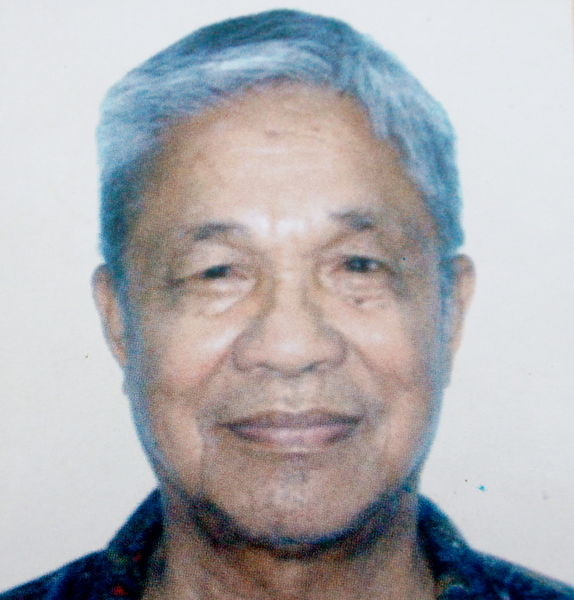
Modesto C. Manglicmot, Jr. (aka "Sir Modi")
(Personal email to RJB by Ms. Corazon Ong of Manila, 09-18-18;
The UP Bonsai Garden;
Modesto Manglicmot, source
of the above photo)
SEE ALSO: Apr 3, Sep Also
1938 -- Dan Barton was born in Hong Kong, the last of thirteen children. [He would first acquire an interest in bonsai in 1969, but would never have any formal training and would be essentially self-taught. He would be fortunate in having been trained and qualified in the first instance, as an art teacher, and, later in graphic design with Applied Photography being his main subject. He would be a Senior Lecturer at the Bristol Polytechnic (now the University of the West of England) and finally would be graduated to Head of the Photographic Department. Dan would, for over 25 years, serve as a judge for Bonsai at the Chelsea Flower Show and numerous other Royal Horticultural Society shows. He would receive three Awards for photographs of bonsai trees exhibited at the International Bonsai and Suiseki Exhibition, Osaka, Japan, including the major Award for 1989. His first work on bonsai, The Bonsai Book: The Definitive Illustrated Guide, would be published in 1989 by Ebury Press and would be re-printed several times (with a Spanish translation by 2006). Dan would be a Founder of the Association of British Bonsai Artists (2000), The Bristol Bonsai Society, and The Classical Bonsai Circle. He would create several national Bonsai events such as "The Joy of Bonsai" and "Bonsai UK Exhibition" (BUKEX). He would also receive many other International awards for bonsai. Dan would be made a Member of the British Bonsai Roll of Honour (by FoBBS) for contributions to the furtherance of Bonsai within Britain and he would be honoured in 2006 by the Association of British Bonsai Artists (ABBA) with their "Most Prestigious Award." He would be a guest bonsai demonstrator at numerous Bonsai Conventions in the U.K., most of the European countries, and in America on numerous occasions. In the twenty-first century, he would extend his interests to making individually handcrafted stoneware pots for bonsai with his wife, Cecilia, and they would market these pots under the business name of "Esoteric Pots." The couple would have four children (one deceased) and five grandchildren by 2008. Please see this recent interview.] 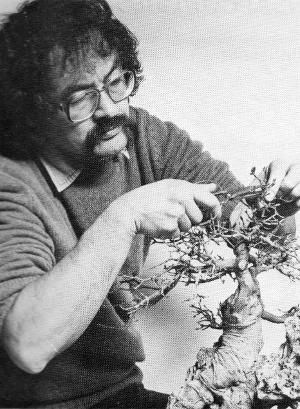
Dan Barton
("Background,"
http://danbartonbonsaipots.wordpress.com/dan/)
SEE ALSO: Jul 25, Sep 26
(Bonsai Magazine, BCI, Vol. XXVI, No. 6, November/December 1987, pg. 9) 1954 -- John Romano was born in Providence, RI. [He would study Sociology at University of Rhode Island, class of 1978. He would start selling rare books after college and study book-binding, but this would not be enough to support the family. The book-binding would evolve into a box-making company with a partner, supplying portfolios and boxes for limited edition artwork; this would be successful for 30 years until the company would be purchased. John would be able to continue working for the new parent company for the next 9 years. John's first experience with plants would not be with bonsai but by working with his Italian grandfather, helping him plant seeds when John would be 4 years old. He would later be pruning apple, pear and fig trees in the garden. This would be his first 'crossing path' or 'unexpected encounter' (kaikou) with trees. In 1975 he would first start to 'play' with bonsai, but it would be more like creating a morgue for trees (something so many of us would initially do)! After this first foray in futility, John would stumble upon some good books and finally would found New England Bonsai Gardens, initially in Natick about 23 miles (37 km) west-southwest of Boston, as a single rented greenhouse in 1987. In the mid-1990s John would start to visit Suthin Sukosolvisit's nursery in MA where he would first learn about the very challenging shohin bonsai. Shohin are currently described as being 8 inches or 20 cm in height from top of the pot to the top of the tree. John would start his trial-and-error period with them, also learning about black pines from Suthin and then larches from Nick Lenz. Since March 1998, NEBG would grow to be a sprawling eight-acre nursery now in Bellingham, MA, about 17 mles (27 km) to the southwest of Natick, complete with eight separate greenhouses. It would become the largest bonsai tree and supply collection on the East Coast. John would teach at the nursery and at clubs and study groups since then. He would live about 50 miles (80 km) south of NEBG in West Kingston, RI. Since 2009, he would be teaching at The Kaikou School of Bonsai, a two-year program headed by him at NEBG that would focus on intensive bonsai study and practice meeting for four full days each year. [John would be the American Bonsai Society Secretary from 1995-97, on its Publications Committee 1996-99, and an ABS Director from 1997-2003. He would have 6 articles and a book review published in the ABS Journal from 1997-2001. He and Suthin would have their article, "Developing azalea shohin bonsai" published in 2000 by Bill Valavanis' International Bonsai, and John would go on to write a continuing series of articles for IB, "A Little Magic with Shohin Bonsai." (Dorie Froning would have written for a column on this previously.) He would also have articles in BCI's Bonsai Magazine and Bonsai Today. He would visit Japan in 2001 and 2003 with Bill Valavanis where he would meet Tomohiro Masumi, and the Fukados, a third-generation shohin nursery. ["Teaching can be learned but you have to make a committment to it and sometimes I think there is an aspect of a 'gift' that some have. You may not be the best bonsai artist but you can communicate good information, share enthusiasm for the subject and LISTEN to people in this way a good teacher can be cultivated. My friend Ed Trout often says, he teaches because he learns so much from it. I wholeheartedly agree. I received the honor of being certified by the All Japan Shohin Bonsai Association as a certified Shohin bonsai instructor in 2021. I wish to thank Tomohiro Masumi, chairman, and Daisaku Nomoto for recommending me to the committee. I also want to thank Boon Manakitivipart, my current teacher, who also put in a word for me. I've had many teachers over the years - in single courses and workshops - as well as more extensive learning relationships working with Kenji Miyata, Hiromi Tsukada and Mitsuo Matsuda and Jun Imabayashi at New England Bonsai Gardens. I was also fortunate to study for short periods in 2006 and a little later at Taisho-en in Shizuoka, Japan with shohin bonsai master, Nobuichi Urushibata. And, course, all of my bonsai friends (Jun Imabayashi, John Kirby, the Colchester crew, etc.) who challenge me to do better by their own great talents which inspire me. My inspiration was, is and will always be the beauty of nature itself." [John would appear at various events including: JAL World Bonsai Contest, US National Bonsai exhibition. He would be awarded Best in Show and Special Award at Tower Hill Bonsai Exhibition (2002), Chase Rosade Excellence in Bonsai Award at the International Bonsai Symposium (2004), Best North American Shohin Bonsai and Best Overall Shohin Bonsai at the Art of Bonsai North America vs. Europe Bonsai Contest (2007). In 2017 and 2019 he would participate in the first two U.S. National Shohin Bonsai Exhibitions spearheaded by Bill Valavanis. Listen to this 2022 podcast with John.] 
John Romano, 10/02
(Quotes from Facebook post on 01/24/2022 and "Bonsai
Artist - John Romano," Bonsai Empire; "Chat with
John Romano," Bonsai Wire, May 9, 2022, Season 2, Episode 13; The Indices, ABS & IB; Facebook Messenger
from John to RJB 12/09/22 pointing out one small directional error)
SEE ALSO: Mar 26, Apr 26, Sep 3, Oct 26
(Photo courtesy of Alan Walker, 05/11/07) 1964 -- The Nippon Bonsai Association (Japan Bonsai Society) was founded for the purpose of expanding, advancing and sharing the bonsai art, to enhance the national sentiment on behalf of this art form, as well as to make a contribution to culture in general. The original Society was a private group. [Its purpose was so widely applauded that its growth would be steady and by only Feb. 11, 1965 it would be registered as a public corporation under the auspices of the Japanese Minister of Education. Following the WW II-loss of much traditional bonsai material in Japan, this Association was formed partially to assure bonsai in its mature artistic form would not lose ground to immature tree or kusa planting as popular introductions into the art. The Society would assume the important responsibility of establishing policies, promoting understandings and, to a certain extent, enforcing standards of bonsai culture. An important contribution would be made by the Society in establishing the true bonsai art which had been traditionally cultivated in Japan and it would also serve the advancement of bonsai art throughout the world by raising the level of effort and popularizing this special art form. The Society would cooperate in displays which would bring much praise during the Olympics in Tokyo and it has supervised bonsai exhibitions on a regular basis at Hibiya park in that city.] ("On Behalf of the Japan Bonsai Society, Inc.," pg. III , English edition of Bonsai Masterpieces ( Nippon Bonsai Taikan, "Grand View of Japanese Bonsai and Nature in Four Seasons" ), 1972, translated by Yuji Yoshimura and Samuel H. Beach; Internet Bonsai Club Forum posting by Chris Cochrane, 30 June 2010, http://ibonsaiclub.forumotion.com/kusamono-accent-plantings-f10/i-got-the-idea-from-dan-barton-25-years-ago-t3184.htm#34245) SEE ALSO: Oct 10 |
||||||
| 2 |
|
||||||
| 3 |
1937 -- Jim Lewis was born. [He would live in 37 towns in 8 countries, going to
14 schools before graduating from high school in Tokyo. He would graduate from San Jose State College (now
University) in 1960, and shortly thereafter marry his wife, Jackie, and spend their honeymoon in La Jolla, CA.
Jim would be growing and designing tiny trees since the mid-1970s. He would become a Master Gardener
volunteer with the University of Florida IFAS Extension in Leon County while living in Tallahassee, FL. One
of the earliest and most frequent contributors to posts of what became known as the Internet Bonsai Club, his
comments would date back to May 1994. He also then would become the rec.arts.bonsai Bonsai List manager
some time in 1997 (succeeding Hud Nordin in that position) and later Internet Bonsai Club administrator.
Thanks to Jim's dogged determination the IBC would survive to become what exists today, a growing contributor to
the world bonsai community. During this time he would share his intimate familiarity with native Southern
species for use as bonsai, particularly Red Maple and Bald Cypress. His personal collection would number
as high as 200 specimens. (And dogs kept would number in the scores.) Jim and Jackie's married son
and married daughter would produce their own families, but always stay close. In 2006 the couple would move
to Columbus, NC, a small town (c.1000 people) in the southwestern part of the state, just a few miles north of the
border with South Carolina and 78 miles west of Charlotte, NC. Jim's involvement with the IBC would continue
uninterrupted. A collector of Japanese, and to a limited extent Chinese, art, Jim would also have a small
(8 acre) horse farm to maintain in NC. This would be after having travelled to Hong Kong, Japan, the
Philippines, and other places with Jackie where he'd also "spent so many years of my misspent youth."
(Jim would also be influential since the earliest days of this historical archive, magiminiland.org /
phoenixbonsai.com.)]
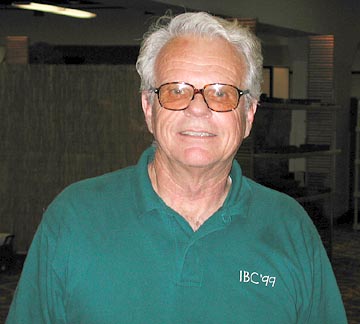
Jim Lewis, 04/13/01.
(Lewis, Jim "Bonsai -- For Christmas?" Dec. 8, 2002,
http://leon.ifas.ufl.edu/News_Columns/2002/120802.pdf;
http://www.bonsaitreeforums.com/forums/archive/index.php/t-5592.html;
http://www.garden-groups.com/goto/7616/%5BIBC%5D_California_Bound.html;
http://www.gardenbanter.co.uk/bonsai/46361-ibc-admin-future-list-very-important-long.html;
Post by Chris Cochrane on "Bonsai on the Internet history," 3 Feb 2006, to BONSAI@HOME.EASE.LSOFT.COM;
http://www.huff-n-puff.net/newforum/viewtopic.php?p=30944&sid=7e2e5ca7f20ae0e568fde6c32cc72e44 ;
http://ibonsaiclub.forumotion.com/t7304-valavanis-open-house-free-demos#75502;
http://www.usenetmessages.com/view.php?c=recreational&g=1354&id=27199&p=0;
http://www.gardenbanter.co.uk/bonsai/48711-ibc-holiday-travel-nawthward-ho.html;
http://www.evergreengardenworks.com/redmaple.htm;
http://www.gardenerscorner.org/subject012112.htm;
http://www.bonsaitreeforums.com/forums/showthread.php?5229-JIM-Lewis-and-IBC-Virus)
SEE ALSO: Apr 9, May 28, Sep 28
(Photo courtesy of Alan Walker, 05/11/07) 1951 -- William N. Valavanis was born in Waukegan, Illinois. [At age 11 he would begin to pot seedlings and bend them into bonsai shapes. At age 15, in Charleston, West Virginia, he would begin to exhibit and lecture on bonsai at local garden clubs, and the following year would start the "House of Bonsai" business. The summer of 1970 would be spent studying in the garden of Kyuzo Murata in Omiya, Japan, and the following year Bill would graduate from The State University of New York Agricultural and Technical College at Farmingdale, Long Island, NY with a degree in Ornamental Horticulture. The next year would be back to Japan to study bonsai with Kakutaro Komuro and Toshio Kawamoto, bonsai chrysanthemums with Tameji Nakajima, and earn a master's teaching certificate in ikebana from the Shofu School. Returning to his home in Rochester, NY, Bill would have to redevelop the bonsai collection which he mostly sold to finance his study in Japan. A degree in Floriculture and Ornamental Horticulture from Cornell University would follow in 1976 on the heels of several months study at Yuji Yoshimura's School of Bonsai in Briarcliff Manor, NY. During his school days Bill would continue to teach, train and sell bonsai; at Briarcliff he'd conduct introductory and intermediate level bonsai courses. Returning from another trip to Japan in 1978, the business' name would be changed to "The International Bonsai Arboretum" and Bill would begin publishing the quarterly International Bonsai magazine in the spring of 1979. A number of the articles in it would be translated from the best Japanese bonsai magazines. Beginning in 1981 and running through 2011 he would host a two to four-day long annual seminar/workshop in September on a given type or style of tree. One hundred and fifty to two hundred participants each year would attend and be taught by a local, national and international faculty. Bill would continue to teach classical bonsai art. He would author many articles which would be printed in English, Japanese, and European publications. He would make made TV appearances in North America, Japan, Korea, Italy, and Australia. He would be a frequent contributor to the Internet Bonsai Club forum. In June 2008 he would hold the first biennial U.S. National Bonsai Exhbition, with its companion commemorative album coming out soon after. In late January, 2009 fire would destroy much of Bill's house and office. A few fund-raisers by the bonsai community would help a little in the long rebuilding process, but the world's longest-running independent English-language periodical would not skip a single issue. Bill would go on to do increasing numbers of demonstrations nationally and internationally. Except for 2009 and 2010 (for health reasons), Bill would lead an annual group tour to Japanese bonsai sites and the Kokufu Bonsai Ten -- which pages on this web site he would generously assist in building, as well as the Teacher Lineage page. He would hold the 2nd and 3rd U.S. National Bonsai Exhibitions in June of 2010 and 2012, before moving the following shows to September, again, with commemorative albums afterwards. The Wikipedia article about him would be set up in mid-October 2011. (Please see that article for additional updates to this Book of Days listing.) And he would author the large format Fine Bonsai: Art & Nature (Abbeville Press Publishers) in 2012 with 596 digital color photos (including 4 gate folds) by Jonathan M. Singer, followed the next year by Classical Bonsai Art, A Half Century of Bonsai Study (International Bonsai). This latter gorgeous work would highlight the development over the years of 100 trees in his personal collection and also act as a detailed presentation of the principles of the art, including the shohin compositions. His blog, https://valavanisbonsaiblog.com/, would date from August of 2013 and allow him to increasingly share especially more photos from his many travels with the bonsai community than he could using the Internet Bonsai Club's forum as he had in the past. A 50-year tribute article about him would be published by Bonsai Clubs International for the first quarter of 2014. Bill would be one of the participants in the Black Scissors Live Demo Around the World on 10th September, 2017. The following month Bill would be the third inductee into the National Bonsai & Penjing Museum's Bonsai Hall of Fame. (His teacher Yuji Yoshimura would have been the second in 2015.) In December Bill received his second knee replacement, completing the job which had been started the previous December. This excellent interview by Ryan Neil was made before the start of the 6th U.S. National in September 2018. An exhibit, "Yuji Yoshimura, a Bonsai Artist Across the Ocean; New York, 1958" took place from October 12 through November 24 at the Omiya Bonsai Art Museum. Included was a video of Yuji's demonstration at a Florida bonsai convention. A special free program "Memories of Japanese Father, Mr. Y" was presented by Wm. N. Valavanis on Tuesday, November 19, 2019 at 2 pm, his first program to be presented in Japan. Over 50 people (including nine members of the Yoshimura family, a landscape architect from Osaka, the Saitama City press, and representatives from two major bonsai publications) attended this standing-room-only presentation which included translation into Japanese by Yukio Murata, grandson of Kyuzo Murata. Bill would be invited to be a judge for the Taikan-ten exhibitions in Kyoto in 2018, 2019, 2022, and 2023. The 7th U.S. National would be held in 2021, postponed one year because of the COVID-19 pandemic. See also this interview from 2021.] 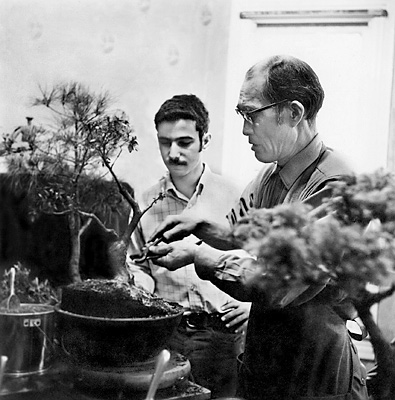
Bill Valavanis and Yuji Yoshimura, 1969.
(Photo courtesy of Alan Walker, 05/11/07) 
(Bonsai, BCI, November 1971, pg. 10)
Bill Valavanis, 04/11/2003
(bio, International Bonsai, 1986/No. 2, pg. 13; some of the trees of WNV,
http://www.artofbonsai.org/galleries/valavanis.php;
Facebook post by Bonsai Society of Upstate New York, Rochester NY, 10/07/17;
"Bill
Valavanis Inducted into the Bonsai Hall of Fame," BonsaiBark, 10/12/17;
"Bonsai
Beyond The Border -- Yuji Yoshimura, A Bonsai Artist Across the Ocean; New York, 1958," Valavanis Bonsai
Blog, November 20, 2019.) SEE ALSO: Oct 11
(Photo courtesy of Alan Walker, 05/11/07) |
||||||
| 4 |
1979 -- Susumu Sudo opened his "Masterpiece Bonsai Garden" on the rooftop
of the Ginza branch Mitsukoshi department store
in Tokyo, Japan. Susumo is a young master of the contemporary bonsai world and is proprietor
of the famous Chikufu-en Bonsai Garden located in Tochigi Prefecture, about
an hour and a half from the capital. At Mitsukoshi, approximately
fifty bonsai are always on display against a bamboo fence or in a large
water basin. Commercial quality, contemporary styled bonsai of various
species are offered for sale. Additionally, a small indoor showroom
is used for antique and new Chinese containers, books, and Masakuni bonsai tools.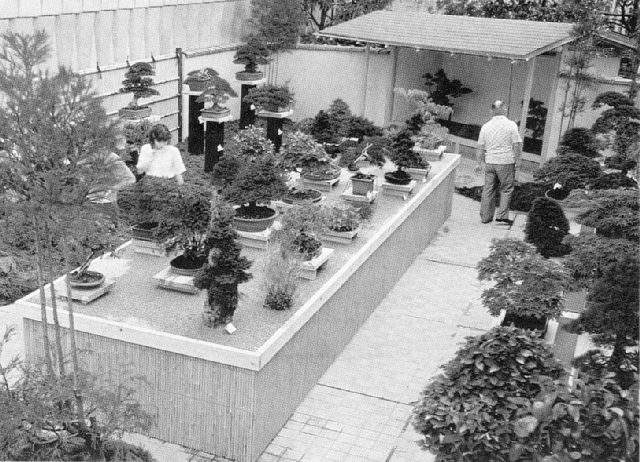
"Masterpiece bonsai garden, operated by Susumu Sudo, on the rooftop of the
Mitsukoshi department store in Tokyo, Japan." (International Bonsai, Spring 1980, pg. 30) 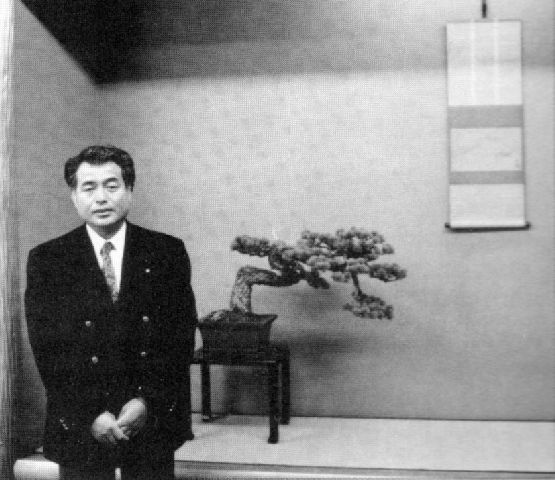
"Susumu Sudo in front of a tokonoma display
("Masterpiece Bonsai Garden Opens" in
International Bonsai, IBA, Spring 80, pg. 30)
featuring a newly acquired five-needle pine." (ABS Bonsai Journal, Spring 1992, pg. 18) |
||||||
| 5 |
1951 -- David Nguy was born in Vietnam. [His experience would
include studying under Harry Hirao ("Mr. California Juniper"), Ben Oki, Ernie Kuo, as well
as Masahiko Kimura in Japan when Ryan Neil would be there (before 2010). David would
become well-known for his work with California Junipers (Juniperus californica) and
Black Pines (Pinus thunbergii), and also for his skills and advanced techniques
found in his signature trees. He would be referred to by the GSBF,
Golden State Bonsai Federation, as "Mr. California
Juniper II". He would travel all over the world conducting demonstrations at various
clubs, judge international bonsai exhibitions, and would be featured year after year as a
headliner for many bonsai conventions. His appearances at GSBF conventions would include
the years 2012, 2014 (joint with American
Bonsai Society), 2015, 2017, and 21019. Founder and Sensei of the
Chino Bonsai Club, David would also be Founder
and vice president of the Satsuki Bonsai Society of Orange County, and Honorary Sensei of the
Phoenix Bonsai Society
since 2013. David's styling of a large juniper for the
San Diego Bonsai Club in 2017 can be seen
here. A
video tour of David and June Nguy's Shisei-En garden in Chino, CA in 2018 can be seen
here. In 2019, David would
travel to the Philippines and Vietnam to do demos, workshops, and judge. During his
trip to Quezon City, Philippines he would be able to judge and do demonstrations at the 9th
Annual National Bonsai and Suiseki Show. In Vietnam, he would travel extensively
through the country to teach bonsai demonstrations and workshops to local clubs such as the
Viet Nam Conifer Bonsai Club
and the Ha Noi Black Pine Club.]
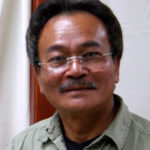
David Nguy
("Sensei David Nguy," Bonsai Jidai;
"David Nguy," BCI;
"Artist
Spotlight; David Nguy -- California Juniper," California Bonsai Art, March 9, 2013;
personal e-mail to RJB from Carol Roberts, Oct. 4, 2015) SEE ALSO: Jan 26, Mar 31,
Jul 28
(Photo courtesy of Phoenix Bonsai Society) 2016 -- Charles S. Ceronio died. (He was born in Pretoria North, Gauteng Province, South Africa and received a BA in Public Administration from the University of Pretoria. He started growing bonsai in 1968. He was the President and was co-founder (in 1969) of the Pretoria Bonsai Kai. Charles also served as Chairman of both the Provincial and the South African Bonsai Association for a couple of years. In 1981, a small group of South African bonsai growers attended the 25th Anniversary of the California Bonsai Society on the invitation of John Naka. Charles became a John Naka disciple, and since that time John would visit South Africa on numerous occasions until his death in 2004. Other great masters who had an influence on Charles were two of John's students, Ben Oki and Roy Nagatoshi. (Charles was a pioneer for bonsai not only in South Africa but also in neighboring Namibia and Zimbabwe. Because he grew up in a country rich with plant species, Charles became well-acquainted with the magnificent local tree species, including the Giant Baobab and the umbrella-crowned Acacias which are so typical of Africa. He felt privileged to live in a country having more than 1,000 tree species and, for this reason, gave a talk on "The Winds of Change to Indigenous Bonsai Styles for South Africa" at the 1st South African Bonsai Convention held in Cape Town in 1980. At that convention, he introduced South African bonsai enthusiasts to six new African styles that he had created: The Baobab style, the Pierneef or Umbrella-shaped style (which represents the Thorn trees of Africa), the Flat-Top Acacia style, the Wild-Fig style, the Bush-veldt style, and the Elbow style. Charles' favorite bonsai style was, surprisingly, not the Pierneef or Baobab styles, but rather "forest plantings." To him, "a forest conjures up images of birds singing, the smell of fermented leaves, fairy-painted mushrooms, the rustling of pine needles and the rippling of trout streams." In 1999, he published his book Bonsai Styles of the World. Regarded as the bonsai bible on styles, a second edition of this book was published in 2004, and an updated 3rd with 800 Line drawings, 100 colour photographs was released in March 2016. In 2009, Charles was working on a book on indigenous plants suitable for bonsai in Southern Africa. He was an advocate for growing indigenous bonsai because they adapt so well to South Africa's harsh climate. He found it encouraging that most bonsai lovers around South Africa were now utilizing the richness of their native plant material in their own collections. (During 1999 and 2000, two of Charles' trees were selected as being among the 100 best trees in the world in the JAL World Bonsai Contest held under the auspices of the Nippon Bonsai Association. In 2001, he attended the 4th World Bonsai Convention in Munich, and the following year he participated in Harry Tomlinson's Summer School in Nottingham. Charles did a demonstration for the 5th World Bonsai Convention in Washington, D.C. in 2005. One of his trees was featured in a commemorative book during the 6th World Bonsai Friendship Convention in Puerto Rico in 2009. He gave demonstrations at the Bonsai Convention in Slovakia in 2003, and in Pakistan in 2004 - returning to the latter annually through at least 2011). He acted as judge for Brazil Bonsai Association together with European Bonsai Masters such as Walter Pall [Germany] and Salvatore Liporace [Italy]. Charles also appeared on several bonsai programs on national television in South Africa (Kyk-Net and Keith Kirsten's show on SABC2), as well as in Slovakia, Brazil, and Pakistan. He was also interviewed on numerous Radio programs over the years and was featured in many articles in newspapers, as well as leading South African Magazines such as "Sarie", "Rooi Rose", "Garden and Home" and "Lantern". (His group of 50 Celtis sinensis trees received a golden award from the China Bonsai Convention in 2009. They were planted on a 120 cm in length container made by Charles. A fan published a collection of photos as "African Bonsai From The Collection of Charles Ceronio" in 2012. (His 50-tree forest is at the 1:40 mark of this 1:55 video.) Charles was selected as an international judge with World Bonsai Friendship Federation Photo Competitions as well as many others. He was also a featured artist at the MidAtlantic Bonsai Societies Spring Festival in 2010 in New York, the 3rd African Bonsai Convention in Durban in 2011, and at Wigert's Bonsai 8th Annual Open House Event in early Nov. 2013 in Florida.) 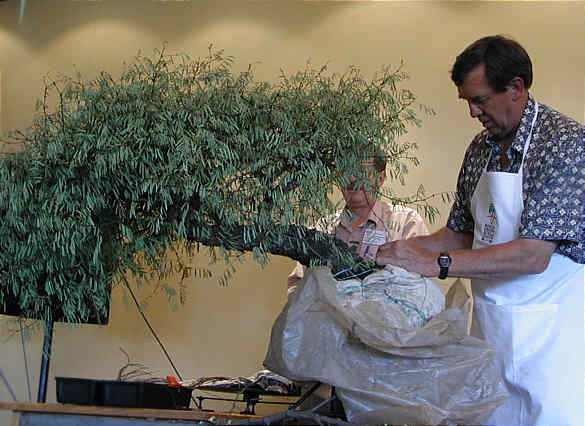
Charles Ceronio, Nov. 2002.
("RIP - Charles Ceronio," posting by Dorian Fourie on Sept. 5, 2016,
http://www.bonsainut.com/threads/rip-charles-ceronio.24667/;
"Charles Ceronio,"
http://www.sabonsai.co.za/Bonsai Masters/Charles Ceronio.html;
archival copy of his website from Jun 19, 2012,
http://web.archive.org/web/20120619032327/http://www.bonsai4u.co.za/.)
SEE ALSO: Jan 26, Jan 27, Feb 19, Apr 20, May 15, Jul 20
(Photo courtesy of Alan Walker, 05/11/07) |
||||||
| 6 | 1959 -- Poncevic "Vic" M. Ceballos was born in Manila,
Philippines. (He would graduate from secondary school in 1975 at Colegio de San Juan
de Letran, Manila, obtain a Bachelor of Arts degree with a major in History and Political Science in 1979 from
De La Salle University, Manila and
get his Bachelor of Laws degree in 1983 from Ateneo
de Manila College of Law, Makati, Metro Manila. He would live in
Quezon City, Philippines and be married to Leila G.
Capino, producing four children. He would be an Attorney-at-Law specializing in Corporate,
Litigation, and Labor Law. Vic would be a professor from 1990 to present at Ateneo de Manila School
of Law, Makati City, from 2010-2011 as the Dean at Liceo Law, Cagayan de Oro City, and from 2011-12 Philippine
Christian University Law School,
and then Associate Dean there from 2012-present; Pre-Bar Reviewer and Special Lecturer: Ateneo School of Law,
Aklan Catholic College, University of the East, Philippine Christian University, Lex Magnificus Bar Review
Center (Cagayan De Oro, Naga), University of the Philippines, College of Law, Lyceum of the Philippines,
University of Cebu, University
of Hong Kong; Recipient of three professorial chairs administered by the Ateneo School of Law; Managing
Partner: 1995 to present, Ceballos Law Firm and President of Ceballos Bar Trends, Inc. -- mock bar exams
provider for five venues. President (incumbent) of seven corporations, (past) Corporate Secretary
and General Counsel for a dozen corporations, (past) Director of five corporations, and Legal Counsel for
nine corporations. (In his spare time, Vic was also be Bonsai Artist, Lecturer and International Show Judge and President of the Philippine Bonsai Society Inc. for ten years. He would demonstrate at the 7th Asia-Pacific Bonsai & Suiseki Exhibition and Convention (ASPAC in 2003 in Manila), at the 12th ASPAC (joint with 7th World Bonsai Convention) in 2013 in Jiangsu, China, and at the 14th ASPAC (joint with BCI) in 2017 in Taiwan. He would be a Director of Bonsai Clubs International (BCI) in 1998-99. In 2000 he would win the BCI Artist, Writer, Photographer Award and that year would be a contributing editor to Bonsai magazine and have articles published in 1999 and 2000. Some thirteen articles of his would be published in International Bonsai magazine from 1996 to 2002. The Souvenir sheet of four Philippine postage stamps, issued July 27, 2004, would include a lemonsito and two bougainvillea bonsai owned and photographed by Vic. "The very first bonsai exhibition in Taipei in 1995 (First Hwa Fong) that I attended and I was the only 'foreigner' present, upon the invitation of Mr. I Chi Su and Helen Su. I was given the red carpet treatment, which I shall never forget! Back then I invited Taiwanese masters to the Philippines, who at that time were still unknown to Pinoy bonsai artists. Now, Taiwanese masters are much sought after all over the world. Taiwan bonsai was also unknown then to the world, unlike at present, which is appreciated by all in the bonsai world! Philippine bonsai is now world-class, undoubtedly, and thanks to the Taiwanese masters and patrons (and everyone else) who supported Philippine bonsai!") (Facebook postings, March 1-3, 2024, and his Facebook page, accessed 03/03/24 ; "2016-2018 Candidates," President's Page, BCI ; The Indices, BCI, 2004, pp. 23, 34, 41, 54, 82 ; The Indices, IB, 2004, pg. 18) SEE ALSO: Feb 28 1991 -- Grandmaster Kyuzo Murata, proprietor of the Kyuka-en Bonsai Garden in Omiya, Japan and caretaker of the Imperial Bonsai Collection in Toyko, died at the age of 89. ("Editor's Note," Bonsai Journal, ABS, Spring 1992, pg. 28) SEE ALSO: Sep Also, Nov 24 |
||||||
| 7 |
|
||||||
| 8 |
1956 -- Michael Dean Blanton was born in Murfreesboro, TN. [He and his wife,
Amy, would go on to be the first Americans to receive an award in a Japanese Bonsai exhibition.]
("Michael
Dean Blanton," Pittsburg Post-Gazette, December 19-21, 2013;
" Patron of American
Bonsai: Amy Blanton, September 3, 2015," September 25-27, 2015)
SEE ALSO: May 22, Sep 25, Dec 17
2018 -- At the start of the 6th U.S. National Bonsai Exhibition, Ryan Neil had the opportunity to sit down with the founder of the show, Bill Valavanis, for a chat and an interview. These two prominent, experienced and very knowledgeable practitioners discussed notable exhibitions, the growth of bonsai practice in the United States and Japan, techniques they've learned over time, and the evolution happening in bonsai as an art form. The excellent and historically important 52-minute video was produced by Ryan's Bonsai Mirai. SEE ALSO: Sep 3, Nov 21 |
||||||
| 9 |
1913 -- Kahn Komai was born in Los Angeles, the second son of the founding publisher Henry
Toyosaku ("H.T.") Komai of the Rafu Shimpo, the premier bilingual Japanese-American newspaper of the L.A.
community. [Kahn would visit Japan
for two years with his older brother, Akira. The younger would audit some courses at the Nippon University in Tokyo
and be tutored in Japanese history, ethics, and grammar. Mostly, though, he would spend time wandering around the
countryside, accumulating things Japanese. Back in the U.S., he would finish his education at the University of
California at Los Angeles with a degree in political science, work as a city clerk for Los Angeles, and as a newspaperman
for Rafu Shimpo. Khan would meet Kay Nagata, adopted daughter of teacher and nurseryman Fusaji "Frank" B. Nagata,
the Dean of Southern California bonsai nurserymen. Khan and Kay would marry on Dec. 8, 1940, but their first anniversary
celebration would be cut a day short due to the attack by Imperial Japanese forces on the naval base at Pearl Harbor.
Beginning the next April, the Nagatas and Komais would join many of their fellow Japanese-Americans at the Santa Anita Race
Track in preparation for placement at a Relocation Camp. That September they would go to a Colorado camp. After a
year Khan would manage to get out of camp with a job with the Cincinnati Chemical Company, making the insecticide DDT. [At the end of the war, he would return to the West Coast, get a job at a nursery in 1946, and send for Frank Nagata, who had spent the war in Colorado. Together, they would build up a gardening route. "Dad started a new bonsai collection. On Sunday we would pack the car and do all of the nurseries. In those days, in the back of the nurseries there was plenty of bonsai material. It was fun, but I still thought of it as an old man's hobby." Frank would open a nursery in 1950, eventually bringing in material from Japan. Khan would assist, sometimes translating for non-Japanese customers, but would never design a tree of his own. A Father's Day gift in 1955 of a one-gallon-size Japanese black pine and Atlantic cedar would change his attitude. The cedar would be dead in six months, but Khan would soon have a benchful of bonsai. "For a long time I wanted someone to tell me what was right and what was wrong. Dad does not teach by rules, and I am glad. It took longer but it was better." (Frank would teach in a manner which in the western tradition resembled the Socratic dialogue. Instead of giving a direct answer which would make an interesting tree but a rigid student, he would open up alternative options which would make it easier for the student to decide what he wanted the tree to be.) Kahn would open his own nursery in Temple City in 1958, and would himself become an influential figure in that state's bonsai. Khan and wife Kay would be among the founders of the Santa Anita Bonsai Society in 1965 and the Golden State Bonsai Federation in 1978.] 
"Well-known Bonsai Artist Khan Komai leaning in front of the classroom in the
("In Memory" by Marybel Balendonck, Bonsai Magazine, BCI, September/October 1996, pg. 28; Place, Dorothy
M. "Winter Silhouettes Bonsai Exhibition," Golden Statements, GSBF, Vol. XXXII, No. 2, March/April 2009, pp.
15-16; Donovan, Earl H. "The Komai Window," Bonsai Journal, ABS, Vol. 8, No. 2, Summer 1974, pp. 38-39, which
includes the two quotes) SEE ALSO: Apr Also, Jun 19
Komai Bonsai Nursery, Temple City, California. Photo courtesy of Dr. Juyne Tayson." (Bonsai Magazine, BCI, June 1978, pg. 151) 1925 -- James J. Smith was born in Evansville, Indiana. [In 1950 after reading about bonsai in garden magazines he would order the year-old book entitled How to Grow Living Miniature Ming Trees at home by John Kiktavi and four packets of seeds from National Nursery Supply in Inglewood, California. The seeds would germinate but none of them ever became suitable for bonsai. It would, however, start a "love affair" with bonsai. At this time the only book that would be available to Jim was a book by Norio Kobayshi published in 1951 by the Japan Travel Bureau and later the 1957 book by Yuji Yoshimura. These would be his teachers. Since then he would become an accomplished bonsai artist recognized around the world. In 1956 he and his wife Billie would move their family of four boys to Vero Beach, FL, where he would discover tropical bonsai. Jim would study under some of the most accomplished bonsai teachers in America, such as Yoshimura, John Naka, and Tosh Saburomaru, to name a few. Jim would found the Treasure Coast Bonsai Society in 1975. He would exhibit his trees at the Miami Bonsai Clubs International Convention (BCI) in 1975, at all the Bonsai Societies of Florida (BSF) conventions since 1976, at all the BCI Conventions in Florida, at all the Epcot Flower shows, and at the 1993 World Bonsai Friendship Federation (WBFF) in Orlando. Jim would write many articles for bonsai publications and pictures of his bonsai would be seen in books published around the world. He would conduct workshops and demonstrations in many major venues. [In 1979, he and his son Doug would start the Dura-Stone Nursery and would provide quality bonsai and pre-bonsai to his wholesale customers. The Nursery would be open to the public from 8-5 on weekdays or by appointment. Jim would patiently and freely give advice derived from his years of experience in bonsai to all enthusiasts. [In October 2009 the James J. Smith Bonsai Gallery would be established at Heathcote Botanical Gardens in Fort Pierce, FL. with a donated collection of 100 of Jim's finest tropical trees. A three part photo-essay of the collection can be found here, here, and here.] [On Nov. 15, 2009, Doug would pass away while in hospice for cancer.] 
"Jim Smith conducting innovative workshop for 16 children at WBFF '93 using
Ficus Neriifolia (also known as Salicifolia) to inspire these upcoming bonsaiists." (He also gave a demonstration using the same species by creating a 21-tree Literati style forest, tightly gathered into a 22-inch oval tray.) (Bonsai Magazine, BCI, Vol. XXXII, No. 5, September/October 1993, pg. 29) 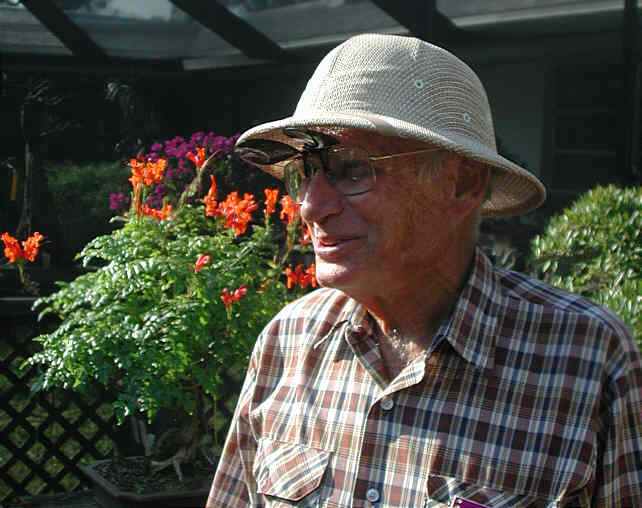
Jim Smith, by Walter Pall, 03/03/2003
("A living tribute to the bonsai styling of James J. Smith,"
http://www.jimsmithbonsai.com/;
"The Bonsai of Jim Smith," http://www.artofbonsai.org/galleries/jsmith.php)
SEE ALSO: Apr 1, Apr 16, Apr 29, Jun 29, Jul 14, Jul 29, Sep 15
(Photo courtesy of Alan Walker, 05/11/07) |
||||||
| 10 |
|
